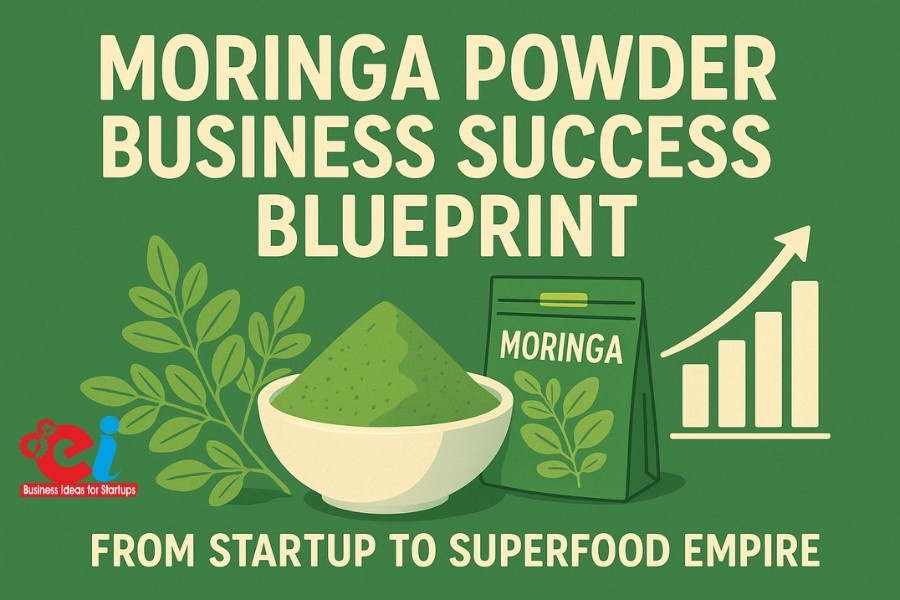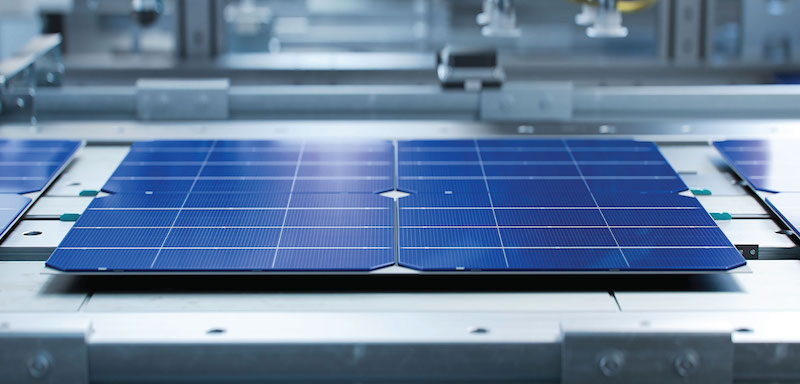The worldwide jewelry market changes due to lab-grown diamonds which present sustainable ethical and economic substitutes for natural diamond products. India’s technological advancement combined with startup-friendly government policies opens a special business opportunity in the global lab-grown diamond market has more than doubled to nearly $25.9 billion in 2024. The detailed blog gives structured guidance for starting a profitable business by producing lab-grown diamonds from graphite material focusing on market data and manufacturing steps alongside earnings potential and Indian governmental support.
Related project profile: Setup plant of Lab Cultured Diamonds From Graphite
1. Industry Overview: Market Growth & Trends
The global lab-grown diamond market is expanding rapidly. It is projected to grow at a 18.7% CAGR and reach a market size of $29.5 billion by 2027. This growth is driven by several key factors:
- Ethical Sourcing: Survey findings show that 70 percent of millennials select lab diamonds because they come from conflict-free origins thus making them appealing to socially responsible buyers.
- Sustainability: The carbon footprint of lab-grown diamonds amounts to only 10% when compared to those obtained through mining operations. The manufacturing process requires minimal water supplies together with reduced utility bills and it needs significantly less area and natural resources.
- Cost Efficiency: Won in laboratories cost around 30 to 50 percent less than equivalent grade mined diamonds so they provide an effective choice for people who must watch their spending.
- Quality Advancements:Modern technology enables the manufacturing of gem-quality diamonds exceeding 150 carats in size which addresses both the needs of the luxury jewelry market and industrial sectors.
In India, the global diamond cutting and polishing hub, the production of lab-grown diamonds reached 1.5 million carats in 2020. The country is increasingly adopting technologies like Chemical Vapor Deposition (CVD) to scale up production, and by 2025, 20% of global diamond sales are expected to be lab-grown.
2. Why Graphite-to-Diamond is a Lucrative Business
The main starting material which manufactures lab-grown diamonds is graphite because of its high carbon content. Production of diamonds from graphite occurs through two dominant techniques:
- Under High-Pressure High-Temperature (HPHT) conditions graphite experiences a treatment of 5–6 GPa pressure with 1300–1600°C heat to imitate natural diamond formation processes. The HPHT approach stands as an excellent method for manufacturing large diamonds of superior quality which dominates diamond industry applications.
- Chemical Vapor Deposition (CVD) functions through substrate-based gas usage to generate diamond layers which produce suitable results for small colorless diamond production.
Advantages of the Graphite-to-Diamond Process:
- The accessible nature of graphite material makes its acquisition affordable because the manufacturing expenses are reduced significantly.
- The HPHT and CVD reactors possess the capability to expand their production scale to industrial capacity so manufacturers can satisfy increasing global demand.
- Beyond serving the jewelry sector, lab-grown diamonds expand their usage into semiconductor materials, electronics and medical equipment because of their strength alongside their heat-conducting abilities.
3. Step-by-Step Guide to Starting Your Lab-Cultured Diamond Business
A. Market Research & Analysis
- Identify Target Audience: Understanding your market is crucial. The market for lab-grown diamonds attracts environmentally aware millennials together with people who want to save money and businesses that require industrial diamond materials.
- Study Competitors: Internal and external analysis of Diamonds from graphite Foundry and IIa Technologies will demonstrate approaches to pricing as well as branding and distribution decisions.
- Assess Demand: You should employ Amazon and Etsy platforms to monitor public interest and discover emerging market trends for lab-grown diamonds.
B. Legal & Regulatory Compliance
- Business Registration: Register your business as a Private Limited Company or Limited Liability Partnership (LLP) under the Ministry of Corporate Affairs.
- Licenses & Certifications:
- Obtain environmental clearance for your manufacturing unit.
- Ensure diamonds are graded by trusted organizations like the Gemological Institute of America (GIA) or International Gemological Institute (IGI).
- GST registration is required for tax compliance on sales and exports.
C. Technology & Equipment
- Choose Production Method:
- HPHT is ideal for high-quality diamonds but requires an initial investment of around $1–2 million for machinery.
- CVD is more cost-effective for smaller diamonds, with equipment costs ranging from $500,000 to $1 million.
- Source Equipment: Partner with suppliers such as Element Six (UK) or Shenzhen-based manufacturers for the necessary reactors and machinery.
D. Funding & Financial Planning
- Budgeting: The initial investment will range between $500,000–$2 million, covering equipment, licenses, and working capital.
- Funding Options:
- Startup India Seed Fund Scheme (SISFS): Provides grants up to ₹50 lakh for proof-of-concept and market entry.
- Fund of Funds for Startups (FFS): Offers access to ₹10,000 crore in venture capital funds.
- Credit Guarantee Scheme for Startups (CGSS): Provides collateral-free loans up to ₹10 crore.
E. Production & Quality Control
- Hire Experts: Recruit gemologists, materials scientists, and engineers to ensure high production standards.
- Quality Assurance: Implement rigorous quality checks for clarity, color, and cut.
- Certification: Work with GIA or IGI to certify your diamonds’ authenticity.
F. Marketing & Sales
- Brand Positioning: Highlight the sustainability and affordability of lab-grown diamonds. Consider branding them as “Eco-Luxury” for a premium market.
- Digital Marketing: Leverage platforms like Instagram, Facebook, and SEO strategies to target millennials and eco-conscious buyers.
- Distribution: Partner with established jewelers or sell directly via online platforms like Blue Nile.
4. Profitability Analysis
Cost Structure:
- HPHT: The cost structure typically includes 40% energy costs, graphite, and labor expenses.
- CVD: While it uses less energy, equipment costs are higher.
Margins:
Profit margins can reach 30–40% if production processes are optimized.
Pricing Strategy:
- 1-carat lab-grown diamonds can be priced between ₹50,000–₹1 lakh, compared to ₹1.5–₹2 lakh for a similar-sized mined diamond.
- Bulk discounts for industrial clients (e.g., semiconductor manufacturers) can further increase profitability.
Watch this, to know How to Start Lab-Cultured Diamonds manufacturing Plants
5. Government Initiatives for Startups
The Indian government offers strong support to tech-driven ventures:
- Startup India: Startup India offers new businesses multiple advantages such as tax exemptions alongside fast-track patent processes and special benefits for startup development.
- Atal Innovation Mission (AIM): The program gives funding for research and development to help you create new innovative lab-grown diamond products.
- MSME Loans in 59 Minutes: You can obtain loans up to ₹1 crore by using the online portal.
- Remission of Duties and Taxes on Exported Products (RoDTEP): Exports benefiting from this scheme receive tax refunds which enhances the profit margins during international operations.
6. Challenges & Solutions
- The competitive advantage of your product appears through specialization in rare diamond types including pink diamonds and nitrogen-infused diamonds with distinctive colors.
- The use of webinars combined with blogs and social media platforms should teach consumers why choosing lab-grown diamonds provides ethical advantages.
- Regulatory Hurdles: Use Startup India’s self-certification compliance to streamline regulatory processes.
7. Case Study: Success in Gujarat
The lab-grown diamond industry in India has chosen Surat Gujarat to become its central hub because this city operates more than 70% of all global CVD reactors. Entrepreneurs in this region benefit from:
- The government of Gujarat gives manufacturing units in diamond production a capital subsidy of 20–30 percent.
- The availability of gem-cutting professionals together with engineering talents provides entrepreneurs with substantial benefits to maintain elevated production standards.
8. Future Outlook
- India sends 60% of its manufactured lab-grown diamonds to customers based in the U.S., Europe, and China because of their strong international market need.
- Technical innovations in the fields of CVD/HPHT technologies can reduce production costs up to 20% until 2025, which in turn decreases the affordability of lab-grown diamonds.
- ESG-focused investors show interest in the sustainability element of lab-grown diamonds because they comply with the UN’s Sustainable Development Goals (SDGs).
9. Conclusion
An emerging market in lab-cultured diamonds from graphite provides strong industrial potential to business founders who want to exploit this highly growing sustainable sector. Entrepreneurs who employ HPHT and CVD production techniques to access government funding while educating consumers will succeed in generating profit from India’s $30 billion lab-grown diamond market.
Govt incentives for innovation coupled with increasing global demand make the present time ideal to become a part of the lab-grown diamond market. Today marks the beginning of converting graphite into valuable diamonds by solving both ethical and environmental problems.
























